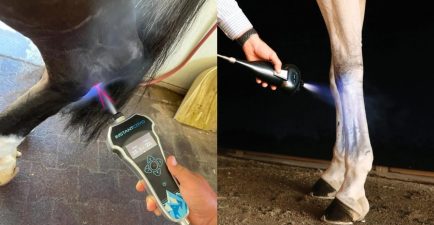You may recall the movie Erin Brockovich, where the carcinogenic chemical hexavalent chromium was of extreme concern. Chromium is a chemical element (atomic number 24) that is primarily used in making stainless steel. It has several different isotopes, meaning they share the same number of protons, but different number of neutrons. There are also several valences of this atom – which describes how well an atom can combine with other chemicals. Chromium is also often found bound to other elements such as chromium chloride, chromium citrate, chromium picolinate, or chromium propionate.
Chromium has only recently been acknowledged as a nutrient, with early findings of rats and human patients with chromium-deficient diets developing signs of abnormal glucose metabolism, which were reversed with the addition of chromium. In 2010, it was recognized to have a nutritional role by Health Canada.
In the body, chromium binds with the low-molecular weight chromium binding substance (LMWCr) to create chromodulin. Chromodulin functions to amplify the activity of tyrosine kinase, which is an enzyme associated with the insulin receptor. After insulin binds to its receptor, it becomes activated and stimulates a series of reactions that ultimately trigger the movement of glucose transporters (called GLUT4) to the cell membrane, which allows glucose to move from the bloodstream into insulin-sensitive tissues such as muscle, adipose, etc.. The binding of insulin activates the insulin receptor, and chromium enhances that activation. Therefore, chromium functions to increase the action of insulin and thus facilitate the clearance of glucose from the blood, and increases glucose uptake into tissues.
There are several forms of chromium, found both naturally in the human diet (meat, brewer’s yeast, broccoli) and as supplements for horses. Chromium picolinate is a common form fed to horses, and Ott and Kivipelto (1999) reported faster glucose clearance following the infusion of glucose intravenously into the blood when horses were fed 0.42 mg chromium picolinate per kg of feed. Chromium yeast has also been shown to impact glucose metabolism. Vervuert et al. (2010) reported improved glucose metabolism in ponies and horses (when given at 25 ug/kg BW). Pagan (1995) reported a tendency for lower glucose and insulin concentrations after a meal containing 5mg Cr.
While there was some evidence of efficacy of these forms of chromium, there was not enough proof that chromium should be approved to be included as an ingredient in horse feeds. In 2018-2019 a series of studies were conducted at North Carolina State (in which I was a lead researcher). We examined the efficacy and safety of chromium propionate on insulin sensitivity in horses, as it has previously been shown to improve glucose metabolism in cattle and poultry. Forty-eight healthy horses were used in the study with different amounts of chromium fed per day (0, 2, 4 or 8 mg per day) for 28 days. We measured insulin sensitivity using an oral glucose tolerance test and also monitored glucose concentrations following the feeding of a concentrate meal (about 1kg of concentrate). We found that supplementing with 4 mg per day of chromium propionate (which worked out to be about 0.36 mg chromium per kg of feed) significantly lowered glucose and insulin concentrations following a concentrate meal, and improved insulin sensitivity. High blood insulin concentrations can lead to laminitis, which in turn can produce devastating lameness, loss of use, and even death.
With this evidence, chromium propionate is currently the only form of chromium approved for inclusion in equine feeds by the American Association of Feed Control Officials (AAFCO) and the Food and Drug Administration (FDA). At this point, while there is sufficient evidence that chromium propionate can improve glucose metabolism in horses, there’s hasn’t been enough research to determine how chromium may affect horses with insulin dysregulation, such as those with equine metabolic syndrome (EMS). We also do not know if different forms of chromium would be as effective as chromium propionate.
As always, work with your equine nutritionist to determine how you can incorporate chromium propionate, or other forms, into your horse’s diet.
Original article: Chromium: What is It and Why Do Horses Need It? (horsesport.com)

























